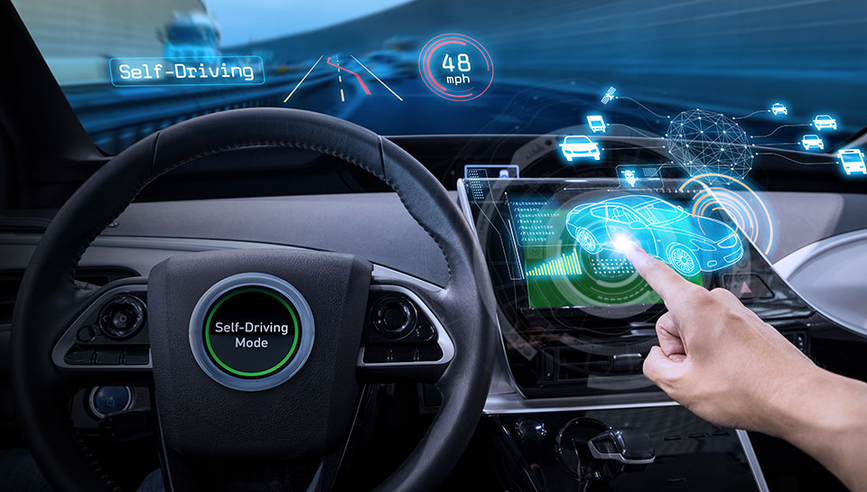High-Tech Cars: What's New in Car Safety Features?


High-tech cars are here to stay. Car safety technology is evolving quickly, bringing scores of often unpronounceable abbreviations for new systems that promise to keep us safer. Can a car read a street sign? Can the family wagon's safety systems react to a sudden traffic change faster than a seasoned driver? Automakers say yes.
We're all familiar with established safety systems like anti-lock braking systems (ABS) and traction control. ABS dates back to the late 1920s, when it was first developed for aircraft, although it wasn't until 50 years later that this now nearly ubiquitous technology reached the highway. Technology is advancing faster now than ever before, bringing inventive new safety systems to your dashboard and automobile chassis. Let's take a look under the hood of today's high-tech cars to see what some of the most intriguing new technologies offer and how they can make your commute safer and less stressful.
- Advanced Driver Assistance Systems. Often referred to as ADAS, advanced driver assistance systems offer a broad range of safety-enhancing features for vehicles. These systems range from sensors that can detect drowsiness in drivers to pedestrian detection and avoidance systems – or even onboard cameras that can read road signs, warning you about speed limit changes or stop signs via dash alerts.
- Automatic Emergency Braking Systems (AEBS). Going a step beyond simpler and possibly distracting collision warning systems, AEBS puts the brakes on rear-end collisions. Sensors continually monitor the distance of vehicles in front of the car. If the system detects that a collision is imminent, it intervenes, assisting with braking if the driver is braking (but not hard enough) or automatically applying the vehicle's brakes if the driver doesn't respond. The National Highway Transportation Safety Administration (NHTSA) reports that up to a third of police-reported crashes involve a rear-end collision.1
- Lane Keeping Assist. Some of the leading reasons for lane-drift crashes are driver distraction, illness and drivers who have drifted off themselves – and are sleeping at the wheel. Lane keeping assist raises the bar above lane departure warning systems, which provide audible warnings and are often manually disabled by drivers, by taking corrective action to keep the vehicle centered in the lane.
- Drowsiness Detection System. Building on the technology that powers lane departure warning, drowsiness detection systems monitor how often you drift from your lane, watching for changes in driving patterns that can indicate fatigue or microsleep, the type of sleeping that happens when you doze off momentarily. Microsleep in your recliner at home is safe. When driving, those seconds spent in slumberland can be dangerous or even deadly. More advanced systems use sensors that watch the driver's face and glance patterns for signs of drowsiness.
- Pedestrian Automatic Emergency Braking. Warning systems that detect pedestrians (or bicycles) are becoming more prevalent but face the same challenge as many onboard warning systems. Audible warnings can be a distraction as you try to figure out what's making that beeping sound – and why. More advanced systems use cameras or radar to detect pedestrians in your path and then automatically apply the brakes if you don't respond quickly enough.
- Traffic Sign Recognition. We've all had some moments of apprehension because we didn't notice a stop sign or a street sign indicating a speed limit change. Fortunately, the new wave of high-tech cars remains ever attentive, and a growing number of vehicles can read the street signs that we might miss and then relay that information on the dash or head-up display.
- Vehicle-to-Vehicle Communication for High-Tech Cars. The NHTSA is studying vehicle-to-vehicle (V2V) communication, specifically as it relates to two safety systems for cars: left turn assist (LTA), which warns of oncoming traffic when turning left, and intersection movement assist (IMA), which warns if it's unsafe to enter an intersection.2 The NHTSA estimates that these safety systems, powered by cars that communicate with other cars on the road, could save over 1,000 lives per year.
Increased safety is the goal of many of the advanced systems in cars now – and of those planned for the future. But the enhanced vehicle safety can pay dividends in other ways by helping to reduce accidents and sparing costly deductibles, while also keeping your driving record pristine. The safety features of today's high-tech cars are as exciting as they are practical, and automakers are continually innovating to meet consumer demand. When it's time to shop for a new car, ask about its ADAS features, for safety's sake.



